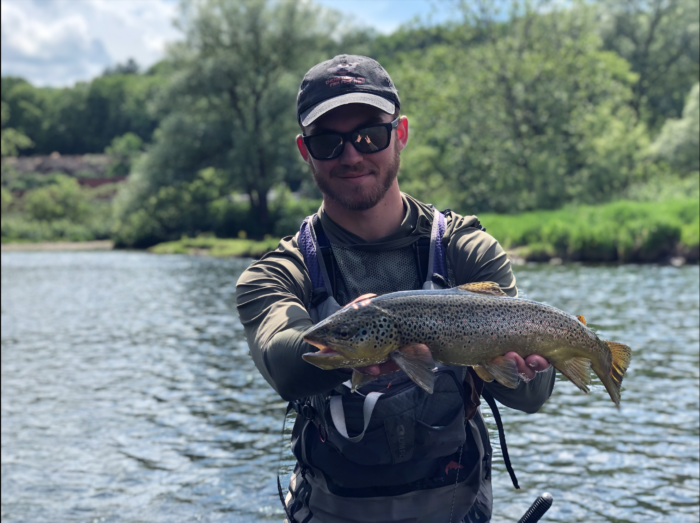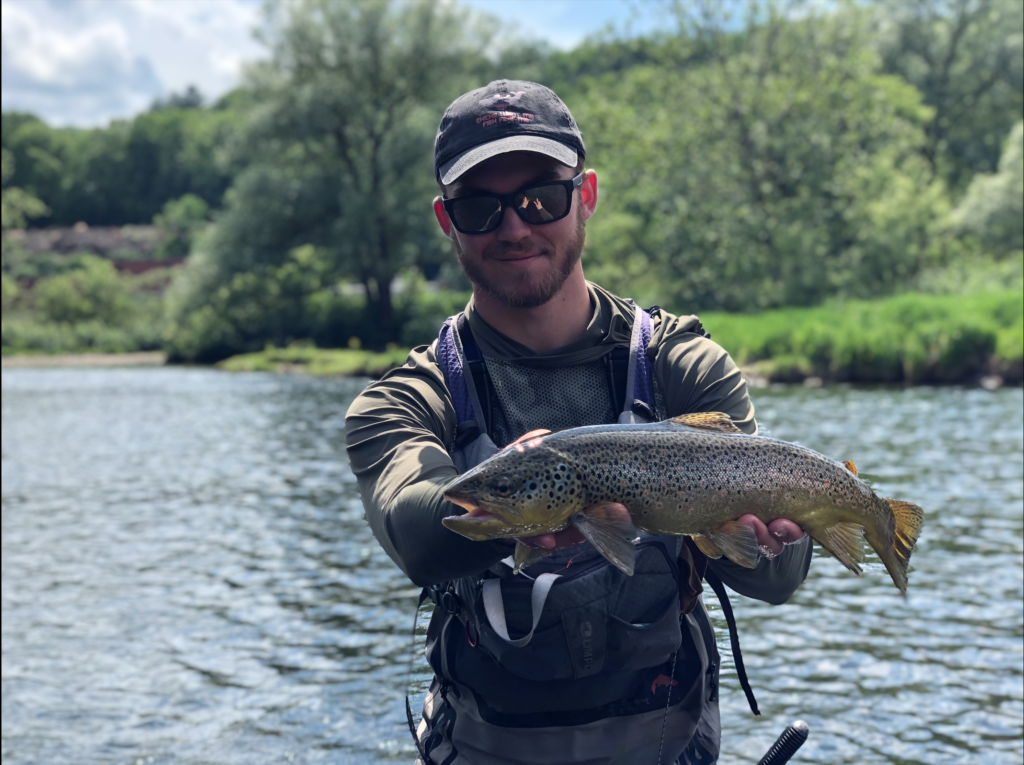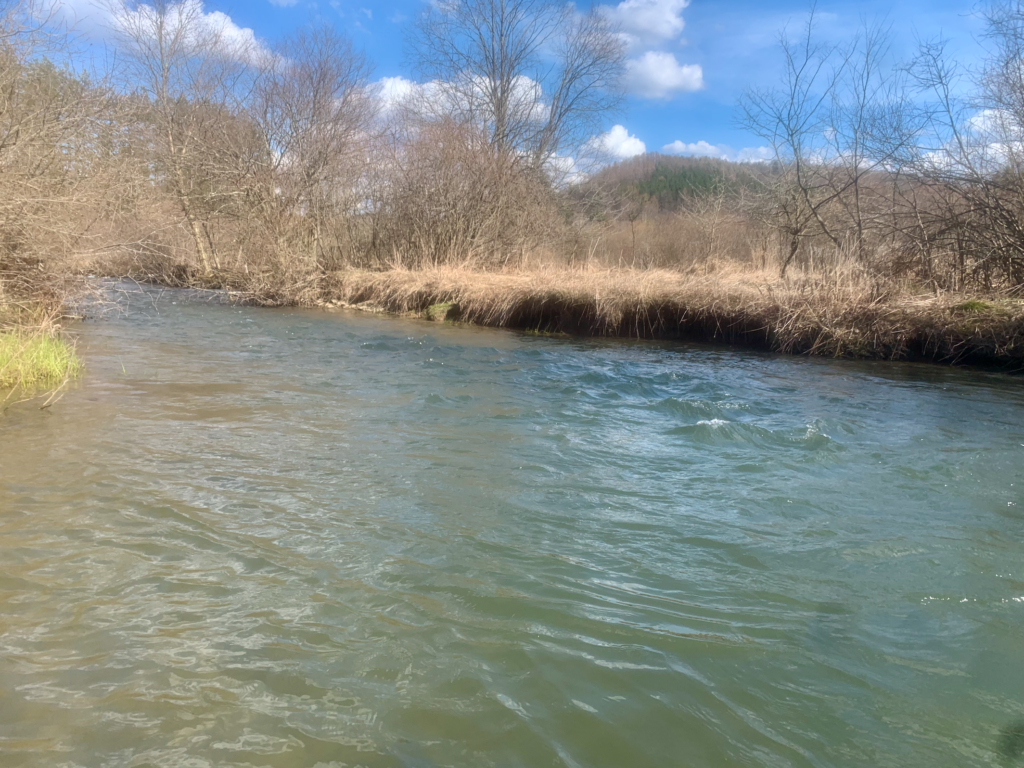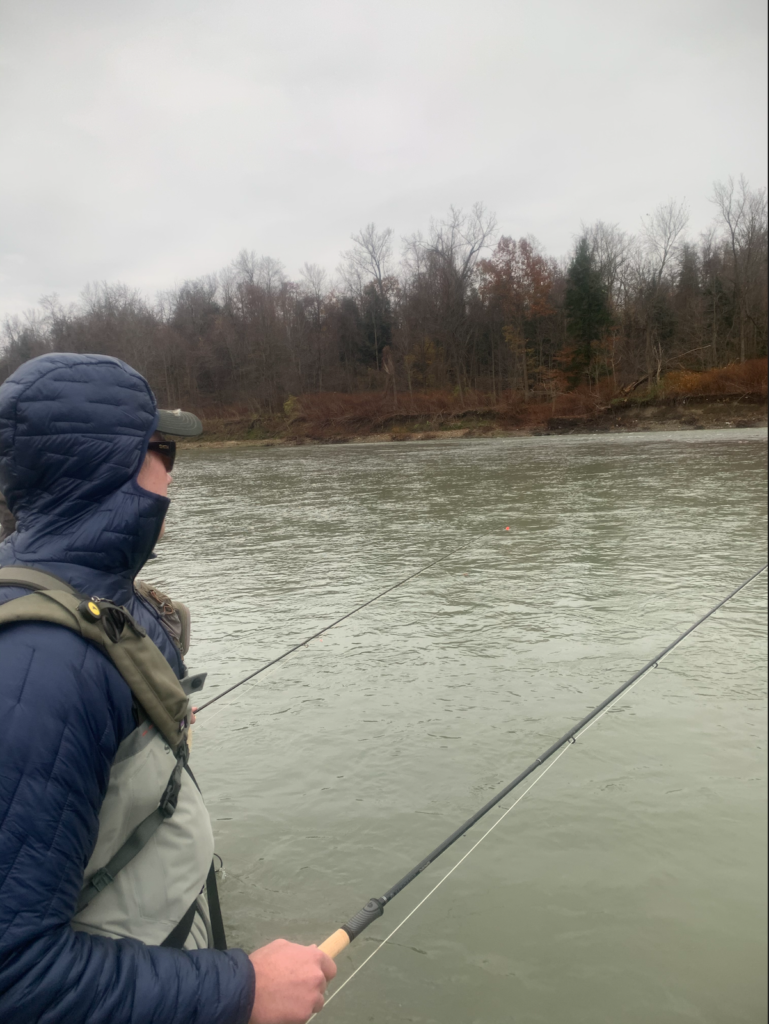
Wade Before You Cast: Use Positioning to Catch More Fish
Over the last few years I have gotten to fish with hundreds of different anglers. Whether I’m out with a beginner or a world champion, I try to learn something from each one. There are plenty of differences between each angler’s style and equipment. I did, however, notice one thing in common among those who consistently caught fish- purposeful and well planned body positioning in water. Experienced anglers always know when to move and where to go to maximize their chance at catching fish. Luckily, this is an easy concept to grasp with a few pointers and little time experimenting on the water.
The most common positioning mistake is anglers standing too far from the fish, especially while fishing dry flies. Recently, I had the opportunity to fish the Delaware river in northeastern PA. This river is world-renowned for incredible dry fly fishing and super picky fish. I was fishing behind some smooth slicks when fish began rising heavily to small tan caddis. After tying on a matching pattern, I quickly caught a brown about 10 feet away. Over the next hour, I caught around fifteen more, none more than 20 feet away from where I was standing.
On the opposite side of the river, another angler was fishing to risers in similar water, however he was casting at least 40 feet up and across the current. It was much harder for him to get good drifts from where he was standing than it was for me being close to the fish. The difference in success was clear, as I watched him net only two fish, when he could have caught many more if he had just waded a bit closer.

The problem with long casts
In nearly every situation, the further you are from the fish, the harder it will be to catch and land. Even in flat water, there are microcurrents that will cause drag. The more line you have on the water, the faster these currents will affect the drift. Move from flat water to faster water with defined seams, and these issues will be ten times worse casting at any angle other than straight upstream. Even if you manage to get a good drift and fool a fish at 30 plus feet away, which is still a very attainable feat, hooking and landing it will be much harder.
I think the probability of landing fish decreases exponentially as distance increases. Your chances of success drop off steeply past 30 feet because of two factors: slack and line drag. The further you cast, the more slack you will usually need on the water to obtain a natural drift. When a fish eats, it takes just a little longer to remove all the slack and set the hook. This is all it takes to hook the fish poorly or miss it entirely.
Line drag becomes an issue when you connect with a fish. The more line you have out the more drag you will have to contend with while fighting a trout. A good size fish is hard to fight as it is. Add the resistance of excess line pulling through the water and it gets harder. Not only will this put more strain on the tippet and raise the chances of it breaking, but the line in the water creates a sort of anchor point that makes it harder to keep up with any quick turns a fish tries to pull. If the fish changes direction and you can’t compensate quickly, the fly can easily pull out.
How to get close
Many anglers are reluctant to get too close to the fish because they are afraid of spooking it or any fish in between. In reality, there are few situations where you can’t get at least 20 feet from a fish. It may not always be easy, but the chance of catching a trout from great distance is usually far lower than the risk of spooking it by wading closer. There’s a few rules I follow when getting in position by a feeding fish or holding water-
- Pick your spot and plan your approach before you move. Mentally mark where you will be standing and how you will get there prior to even taking a step. I usually like to be directly behind or behind and off to the side of the fish when I can.
- Don’t get too close initially. When in doubt, keep twenty feet between yourself and the fish. This is close enough to get good, controlled drifts and easily land a fish, but far enough to avoid detection most of the time. You can always move closer if you feel comfortable, but there’s no going back once the fish sees you.
- Be aware of the sun and your shadow, I try to have the sun in my face when possible.
- Use the environment to your advantage. It’s always helpful to hide behind rocks or trees if you can.
- Stay low. Sometimes you can get away with standing straight up, but more often, you can’t. Wade deep if you can to keep your profile mostly submerged. If you’re in shallow water or on the bank, crouch or get on your knees if necessary. I love my Rothco knee pads for late summer fishing. They make getting out of view much more comfortable.
- Wade slowly and as quietly as possible, and don’t shuffle your feet

If you keep these few tips in mind, there won’t be a fish in the stream you can’t sneak up on.
Past the approach
One of the best anglers I know does so well because of the way he dissects the stream. He begins by purposefully wading into a spot. Then he fishes anything he can reach within 5 feet, then 10 feet and so on until he reaches somewhere around 20 feet out. When he’s finished, he picks another spot and moves, repeating the process. This way he covers every part of the stream without ever making a cast beyond 25 feet. Based on his success this process works incredibly well.
Getting close to the fish is the end goal, but you can’t become so focused on approaching one spot that you miss out on all the others. If there’s just ok water between you and your prime water, put a few casts into the ok water before moving through it. Break down the stream so that you will be in the best position to fish your best water, but can fish all the other holding lies as well. Every step should be thought through as to what water it burns and what new water it will allow you to fish.
Now I will say that there are some times that you just can’t get close to the fish. Sometimes the water is too deep or fast to wade over to the fish on the other side. In this situation long casts may be necessary to have any chance of catching a fish. If the opposite side is really good, I will try and cross the river to fish from that bank. If crossing is not an option, I wade as far out as possible and hold as much line off the water as I can.

I truly believe that most anglers would be more successful if they used their feet a little more than their casting arm. It’s easier to be accurate, precise, and get better drifts when you’re closer to the fish. Moving through the water and creeping up on fish is a whole different set of skills. It can be difficult, but it is one of the best ways to really start catching more fish. As always, feel free to contact me with any questions, or to get some one on one time on the water. Tight Lines!
